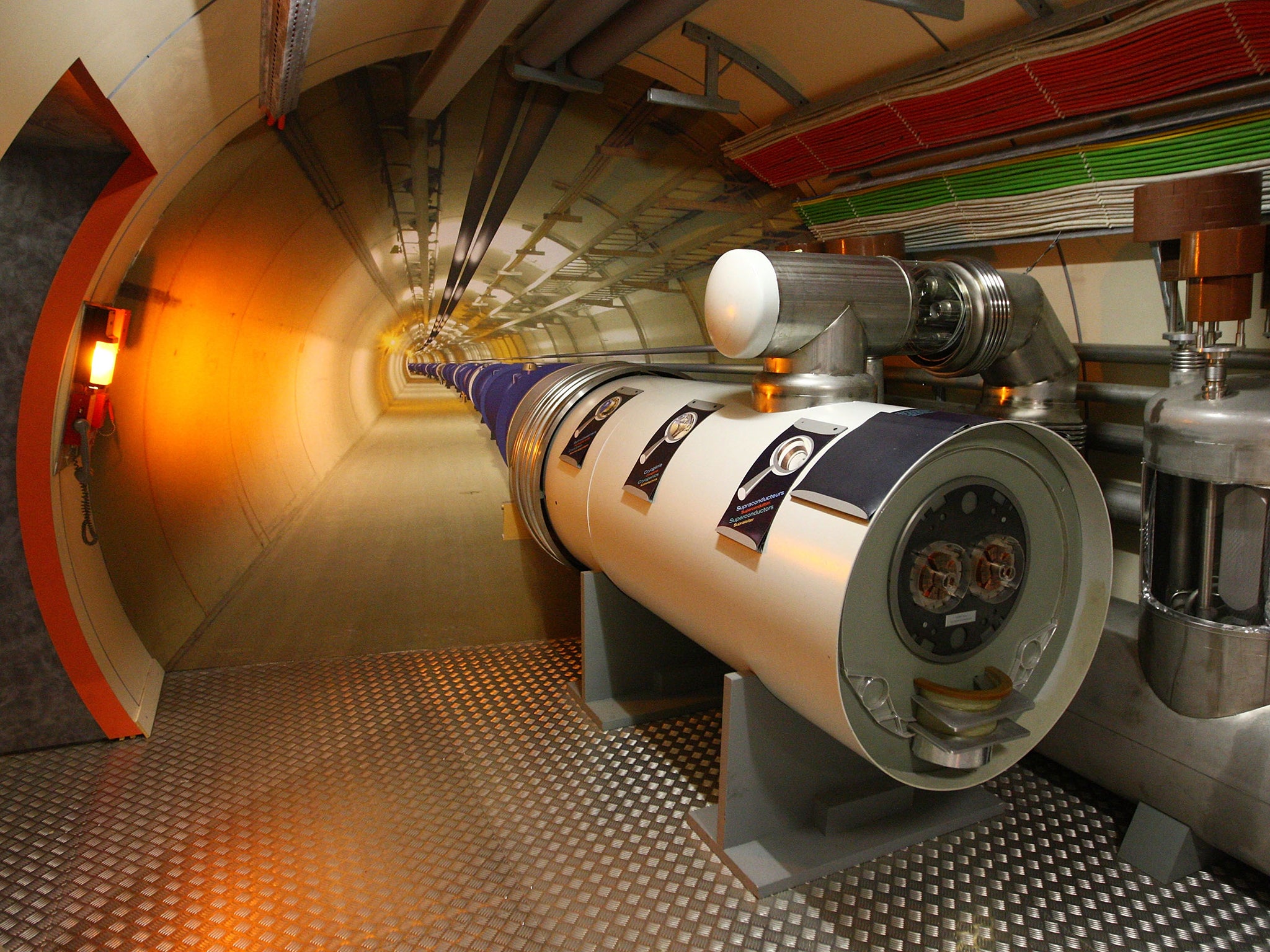The Independent's journalism is supported by our readers. When you purchase through links on our site, we may earn commission.
Scientists use laser to unlock the secrets of antimatter
Physicists learn how to measure antimatter using light

Scientists have succeeded in shining light on trapped antimatter atoms to detect whether they behave differently to regular atoms. This is the first time physicists have managed to control antimatter long enough to directly measure its behaviour and compare it.
The achievement is the result of two decades of work and opens up new ways of studying antimatter. “This is the reason CERN was created,” said Jeffrey Hangst, spokesperson for Cern’s Alpha experiment in Switzerland and professor at Aarrhus University in Denmark.
The study, published in Nature this week, showed the antihydrogen atom responded the same way a hydrogen atom would under light. If it hadn’t, scientists would have had to rethink their understanding of physics.
Antimatter is identical to matter, except that everything within its atoms is the opposite way round, with negative charge being positive and left becoming right. Physicists believe the Big Bang created equal amounts of matter and antimatter - but none of the current theories can explain why the Universe mostly consists of matter. The findings don’t explain why this is the case, but it suggests it is not due to the inherent nature of antimatter atoms.
The group used a one-of-a-kind machine to trap antihydrogen with magnetic fields. Antimatter is extremely hard to study as it can’t coexist with matter. “It’s a watershed moment, we had to make a lot of technological developments to get to this point. First we had to make antihydrogen atoms, one at a time. Then we had to hold on to them for long enough. Finally we shone a laser on it,” Mike Charlton, one of the scientists on the Alpha project, told the Independent.
Mairi Sakellariadou, professor of theoretical physics at King’s College London, said the experiment was an exciting achievement from an experimental standpoint and “confirmed the validity of the Standard Model” which is the current model to describe particles and the forces between them.
The next step for the team will be refining their measurements. “Until now, we’ve hit the antihydrogen with light, but now we’re going to study it with greater precision,” Charlton said.
Subscribe to Independent Premium to bookmark this article
Want to bookmark your favourite articles and stories to read or reference later? Start your Independent Premium subscription today.

Join our commenting forum
Join thought-provoking conversations, follow other Independent readers and see their replies